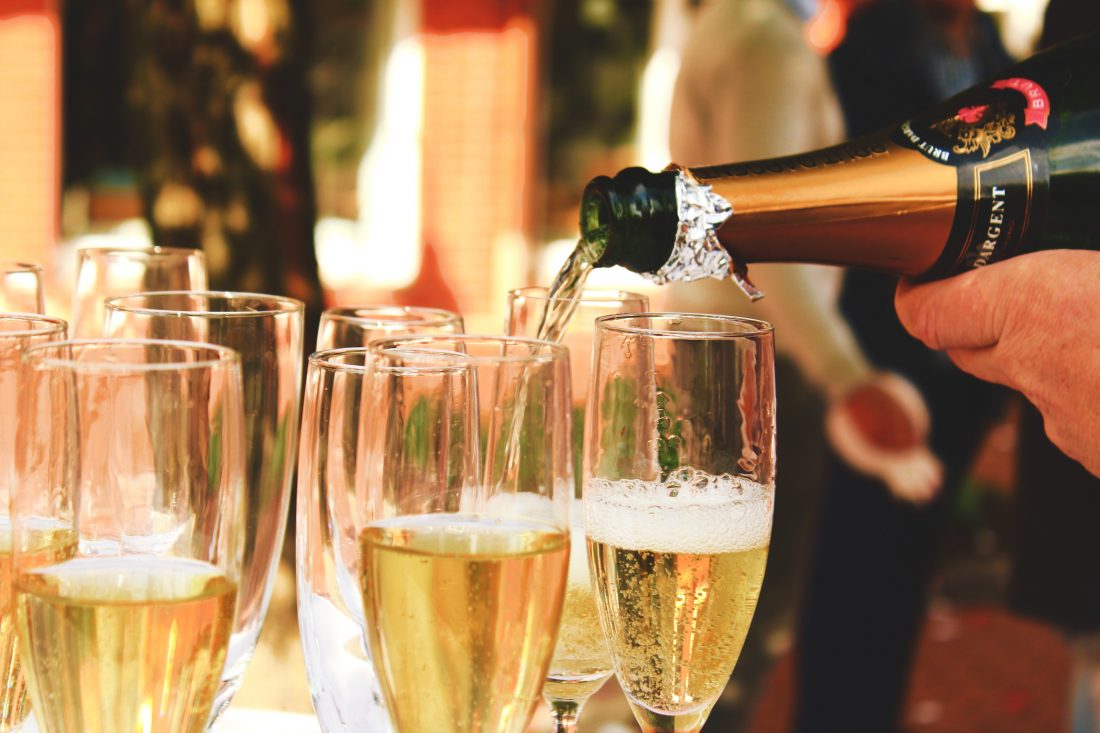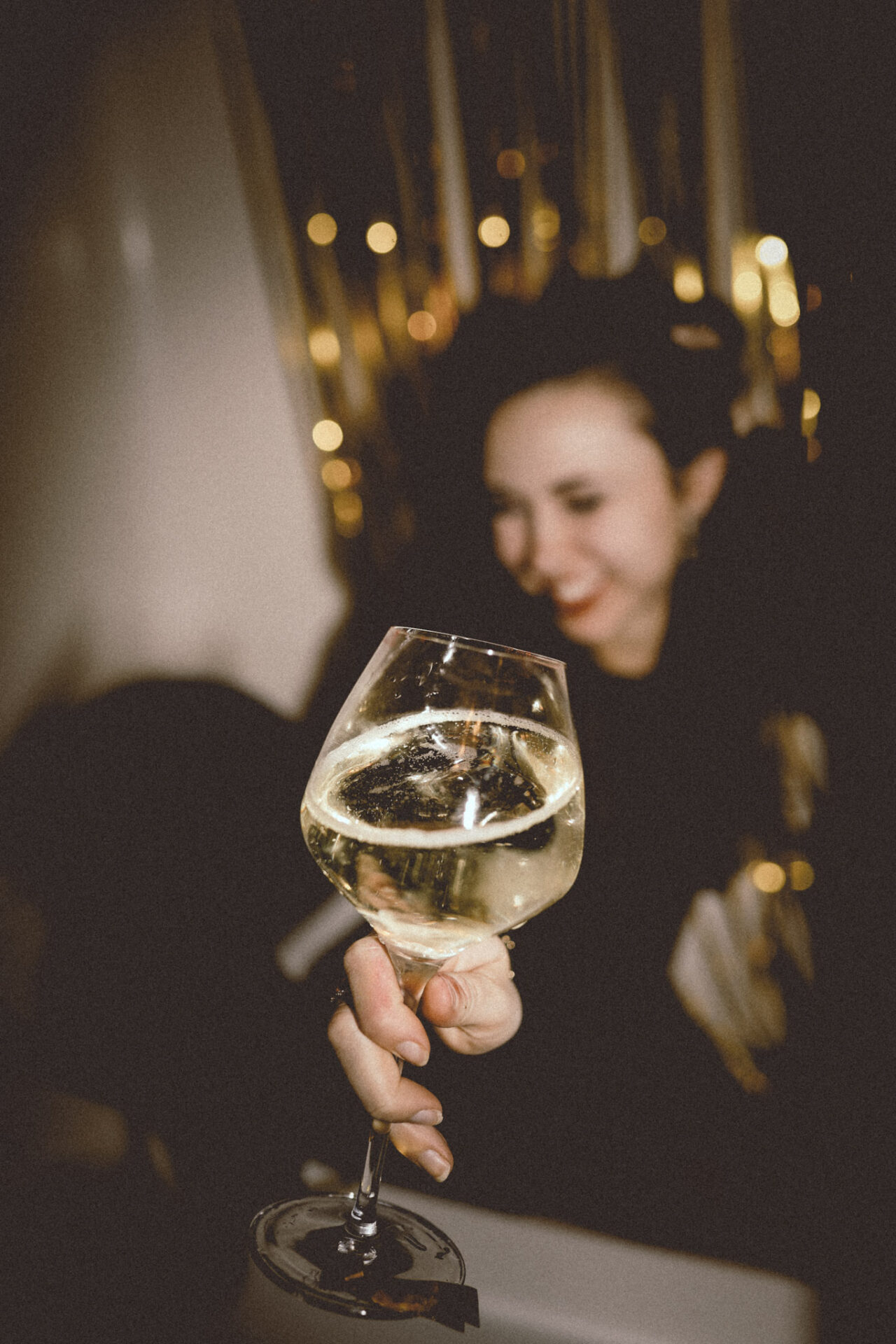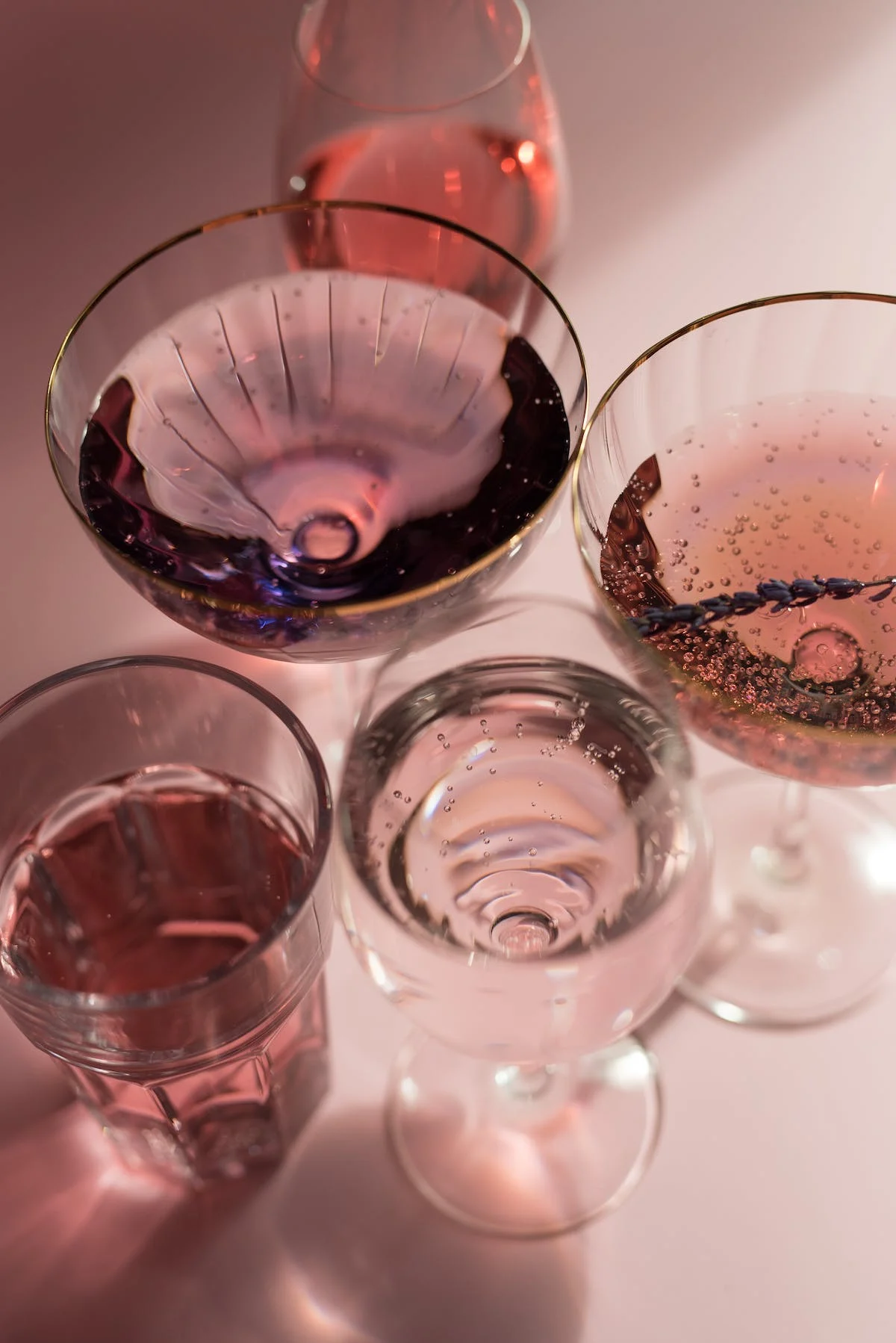
Have you ever found yourself wondering “How many glasses are there in a bottle of champagne?” Whether you’re trying to figure out how many bottles of Champagne you’ll need for a special event, or you’re trying to break down the cost per glass so you can justify an indulgent splurge, we’ve got you covered!
This guide will help you plan your big night without a hitch, or spin your girl math so you can sip a bottle of Dom Pérignon guilt free!
Champagne By the Numbers
The standard 750ml bottle of Champagne holds a little more than 25 fluid ounces – which breaks down to roughly five or six glasses. This can vary slightly, though, since the recommended serving size for Champagne is 4 oz. to 4.5 oz. The amount of Champagne you’d serve per glass is a bit less than your typical wine pour.
There’s more than just one size bottle of Champagne though!
Other Sizes of Champagne Bottles & How Many Ounces They Hold
- Half – Also known as a demi or split, a half bottle of Champagne holds 350 ml//12.68 oz. You’ll get about 2 to 2.5 glasses from a demi, making it perfect for an intimate dinner for two!
- Magnum – Double in size to a standard bottle of Champagne, magnum bottles hold 1.5 L//50 oz. You can get 10 to 12 glasses from this size bottle!
- Jeroboam – Also known as a double magnum, a jeroboam bottle holds 3 L//101 oz. This can serve 20 to 25 glasses of Champagne!
- Rehoboam – Just when you thought there couldn’t possibly be a bigger bottle, enter the rehoboam – typically reserved only for Champagne – which holds 4.5 L//1.52. You can get a whopping 30 to 37 glasses from just one bottle!
Feel free to use this rough breakdown and divide the number of guests by fluid ounces if you’re planning to serve champagne at your next event.

Why Knowing How Many Ounces in a Bottle of Champagne is Useful
Unfortunately, the United States doesn’t use the metric system like the rest of the world, so you’ll need to remember that 25 ounces is equal to 750 ml of wine.
And while knowing how to convert milliliters to ounces can help you keep a rough track of how many glasses of Champagne you’ve had over the course of an evening, in my opinion, there’s better reasons for knowing this metric system conversion.
“Years, lovers, glasses of wine; these things must not be counted.”
– Anthony Capella
If you have to count glasses of Champagne, I recommend only doing it in the loosest of terms, strictly for party-planning purposes. Knowing that there’s 25 ounces in a 750 ml bottle of wine can help you make sure you have enough for provisions for everyone and to keep the party going all night long.

Types of Champagne Glasses
A great piece of glassware can help accentuate a great bottle of Champagne, or even vastly improve a mediocre bottle. If you’re not using the right glassware, though, it can potentially ruin great bottles of champagne and sparkling wine.
While that might sound a little crazy or far-fetched if you’re brand new to the world of wine, glassware is specifically designed to help accentuate the characteristics of the wine. For example, the tall narrow design of a champagne flute helps to preserve the carbonation and effervescence of the champagne, providing you a more refined drinking experience.
You’ll notice that each type of champagne glass features a long stem, which keeps your hand away from the bowl. The warmth of your hand can affect the temperature of the Champagne, as well as the bubbles and efference! Stemless wine glasses are adorable, but if you can, steer away from stemless champagne flute glasses.
- Flute Glasses – The most common glassware choice for Champagne is the flute glass. It’s long and narrow, which helps to preserve the carbonation and effervescence of the champagne. It also lends itself to smaller sips, which is the way Champagne is meant to be enjoyed.
- Tulip Glasses – These glasses are a bit wider at the bottom of the bowl, but narrow towards the top. This design allows for better aeration, and can accentuate the delicious aromas.
- Coupe Glasses – Admittedly, the coupe glass design isn’t as effective at preserving carbonation and effervescence, but its close resemblance to the champagne saucer gives it a vintage charm that’s hard to resist.
- Champagne Saucer – These broad and shallow glasses resemble a bowl on a stem. They were wildly popular in the early 20th Century, but in modern times aren’t as popular as the Coupe Glass.
Frequently Asked Questions
How many bottles of champagne do I need for 20 guests toast?
The breakdown of how much champagne you’ll need for a toast is a little bit different, since a toast usually only class for about a third of a normal champagne flute pour. A good rule of thumb is having one bottle of champagne for every ten guests. If you’re planning to have a toast for 20 guests, you’ll need at least two bottles.
How many bottles of champagne do I need for 50 guests toast?
For a champagne toast for 50 people, you’ll want at least five bottles of champagne. I’d recommend getting an extra bottle though, just in case! If you don’t end up using it, you’ll have an extra bottle on your hands to enjoy later!
How many champagne flutes are in a 750ml bottle?
A typical bottle of champagne holds about five to six champagne flutes.
How many bottles of champagne do I need for 30 guests for mimosas?
The math of how many bottles you’ll need for mimosas will also vary. One bottle will typically make six to eight mimosas, but keep in mind that your guest will likely want some refills. For a crowd of thirty guests, you should have at least ten bottles of Champagne.
Other Blog Posts You’ll Love
Best Champagne & Sparkling Wine: Your Complete Guide
From Dom Pérignon to Cristal: The Ultimate Guide to Expensive Champagne
How Many Ounces In a Bottle of Wine?
